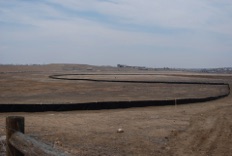Research

Research in the lab centers around evolution in the disease systems outlined here:



Our research focuses on the processes driving evolutionary diversity across spatial and temporal scales. At short temporal scales, novel pathogens exert strong selection on naive hosts. For instance, the pathogen causing avian malaria (Plasmodium relictum) was recently introduced to Hawaii and subsequently caused the rapid decline of native honeycreeper species. Similarly, the bacterium causing bubonic plague (Yersinia pestis) was introduced to western North America, evoking dramatic declines in prairie dog populations. Recently, however, in both cases some individuals have demonstrated the ability to survive infection. I am investigating the genomic underpinnings of this rapid adaptation. Conversely, across longer temporal scales, species diversification may result from local adaptation and specialization.
Ongoing Projects:
Recolonization of prairie dogs following plague epizootics
Black-tailed prairie dogs (Cynomys ludovicianus) in the Front Range of Colorado inhabit a fragmented landscape, with populations interspersed with urban development and agriculture. Periodically, populations are extirpated by a highly virulent bacterial pathogen, Yersinia pestis, which causes sylvatic plague. Plague causes 95-100% mortality of prairie dog colonies, followed by recolonization from nearby populations. After extirpation/ recolonization, re-colonization replenished genetic diversity in some, but not all, colonies in Boulder County. Interestingly, colonists have higher heterozygosity than animals present before extirpation.
(See More)
Genomic basis of tolerance to avian malaria in Hawaii amakihi:
Hawaiian honeycreepers are a classic example of adaptive radiations, but recently many species have declined to the brink of extinction due to the introduction of avian malaria. Although the disease is highly virulent, one species-- the Hawaii amakihi (Hemignathus virens)-- has evolved some resistance to malaria. We are working to understand whether resistance is conferred by few or many loci, what type of selection favored the evolution of resistance, and whether patterns are similar among islands and across taxa.
(See More)
Evolutionary and ecological divergence in Gunnison’s prairie dogs
At the macroevolutionary scale, habitat constraints influencing predator abundance, burrowing ability and plant availability may act as selective agents. Gunnison’s prairie dogs (C. gunnisoni) are split into two geographically disparate subspecies that occupy distinct habitats and are genetically differentiated. Using complementary approaches that include population genomics, coalescence theory and ecological niche modeling, I examine the contributions of different selection pressures to genetic diversity across scales.
(See More)
Connectivity in altered landscapes
Connectivity of populations influences the degree to which species maintain genetic diversity and persist despite local extinctions. Anthropogenic landscape change has fragmented populations of species worldwide, and the front range of Colorado is an example of a landscape influenced by multiple types of habitat change, including urbanization and land conversion to agriculture. We investigate how these landscape changes influence black-tailed prairie dog dispersal through the landscape matrix.
(See more)
Genomics of plague resistance in prairie dogs
A small number of prairie dogs have recently, in the last ~10-15 years, begun to show signs of resistance to plague. Very little is known about the genetic basis of this resistance, so I am working to sequence a prairie dog genome to help us understand the genes underlying the ability to survive this deadly disease. (See more)




